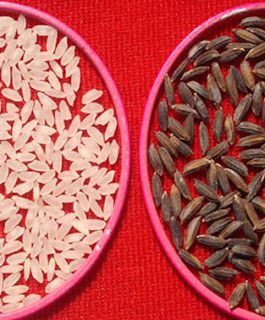Nizamabad Black Pottery is a special kind of clay ware with a dark lustrous body manufactured from Azamgarh district, Uttar Pradesh. They stand out with their striking designs of flowing lines and floral patterns on the surface.
Nizamabad Black pottery features a shiny black surface with engraved silver patterns. The art of making this kind of pottery originated in the Kutch region of Gujarat. It is believed to have been brought to Nizamabad during the reign of the Mughals. Later, talented artisans discovered the technique of adding black colour through ash and smoke, which brought fame to this craft
Image Credit : www.odopup.in
The craftsmen make articles out of clay which has a very fine texture and shapes very well to different forms. After the clay mould is given a desired shape, the items are baked in fire and then are washed with powered vegetable matter. The surface is then burnished with mustard oil after which a sharp twig is used for decoration.
Various beautiful floral and geometric designs are then itched to it. After following these procedures, the clay wares are then set to smoke firing which gives them the black luster. After creating the objects, the items are rubbed with oil and then baked once again.
The grooves of the design are then filled in by hand with a fine silvery powder. When the silvery powder is washed with water and polished, the clay wares exude a silvery hue against the black background of the terracotta.
The craftsmen of Nizamabad Black pottery in Azamgarh district create an array of black pottery items that include Vases, Cups and Saucers (tea set), dinner set, Water Jugs, Plates, Jars, Flower Pots, tableware and other items.
GI Tag Registration Date : 16 November 2015
GI Tag Number : 459
Certificate Number : 237
Geographical Area : Uttar Pradesh
Special Cover Release Date : 29 September 2021
Cancellation : Azamgarh 276 001
Type : GI Tag - ODOP Cover
Cover Identification Number : UP/23/2021
This cover is primarily issued as part of promotion for UP State One District One Product initiative. However it is also a GI Tagged Product with GI Tag details on back side of the cover.









































